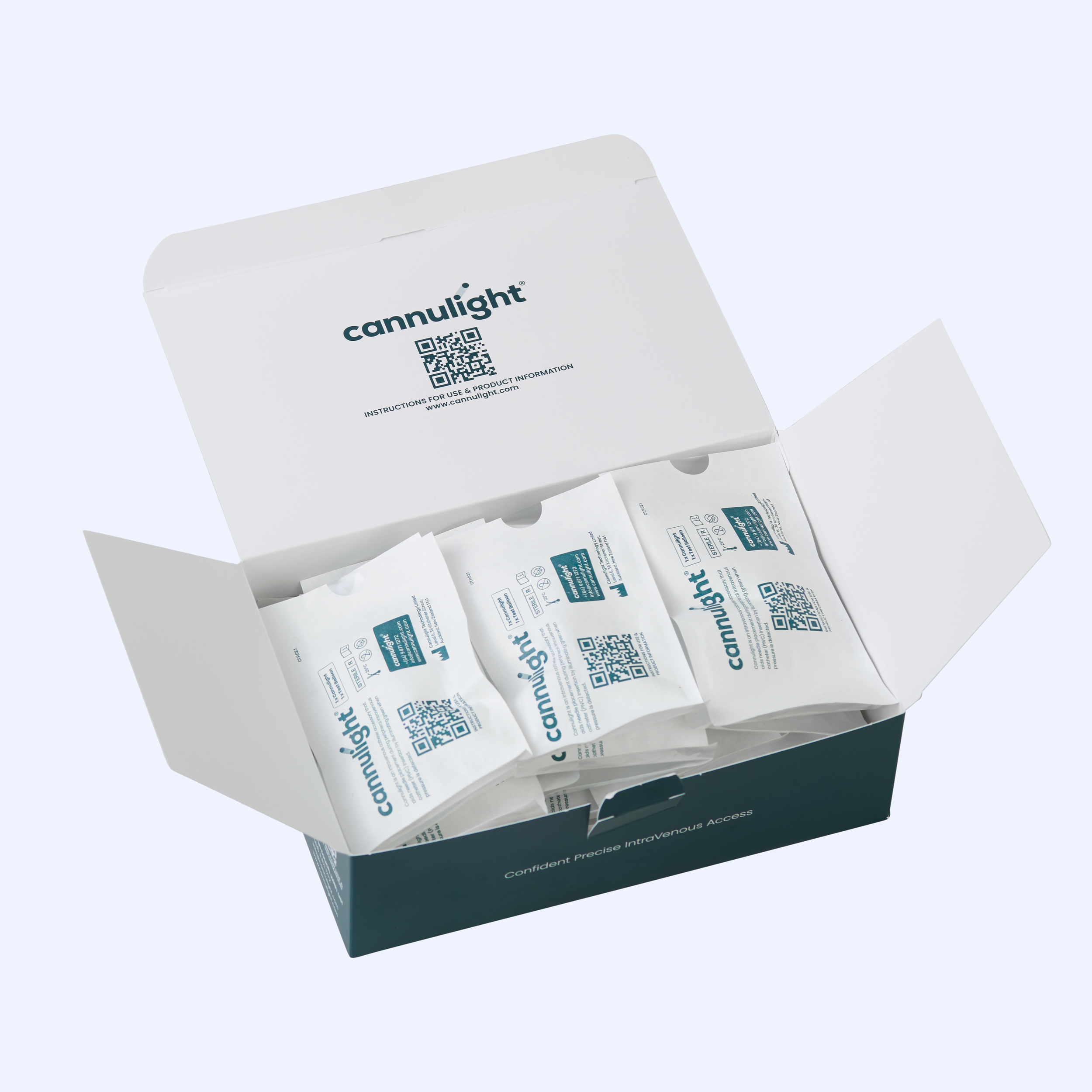
Cannulight – slips onto most PIVCs, lighting up when you enter the vein.
Bringing first-stick confidence and a better patient experience.
Cannulight is currently available for purchase and use only in New Zealand. It has not yet been cleared or approved by the US FDA or other international regulatory authorities.
The information on this website is intended for New Zealand audiences only.
Pre-hospital and Military
First Stick Confidence in Chaos
Hospitals & Clinics
Confidence for Clinicians.
Cost Savings for Hospitals.
Training & Simulation
Confidence That Sticks
Better outcomes, better experiences
US Human Factors Validation Test delivered 100% first stick success in manikin arms.
Increase first stick success
Easy and intuitive to use
Fits with existing PIVC technique. Minimal training required
Minimize PIVC
stress
Fewer catheterization attempts reduce distress
Works straight out of the box
No wires or setup or specialised operator required
Increased operator confidence
Immediate visual confirmation you’re in the vein
Backed by Medics
90% of clinicians felt more confident using Cannulight after their first try.*
82% said they would use Cannulight on difficult IV access (DIVA) patients.*
47% of clinicians reported they would use it on all patients.*
87% of military medics agreed they would use the device in field treatment situations*
82% agreed that Cannulight fits well with my essential medical kit*
US Human Factor Validation Test delivered 100% first stick success in manikin arms.
*Cannulight was trialed by 225 clinicians at SOMA 2024 & 2025 (Raleigh, NC), AVA 2024 (Denver, CO), CRiC, IVNNZ conference, AVA Australia and NZ hospitals.
Intuitive to Use
Test In pack
Slip onto a standard PIVC
Insert and green light confirms vein entry
Secure and treat with confidence
What is Cannulight?
Cannulight is a small, lightweight, sterile, single-use, disposable device that fits onto most standard IV catheters. The moment the needle enters the vein, the device lights up green, giving clinicians instant confirmation of success. If the catheter needle double punctures or exits the vein, the light turns off. If the needle is then repositioned back into the vein the light will turn back on, and the procedure can be rescued restoring both patient and clinician confidence.


















